Korean Braised Lotus Root (Yeongeun Jorim)
This glossy Korean braised lotus root is a vegan banchan that’s easier to make than you might think. The slices turn tender-chewy with a sweet-savory glaze, perfect for chilled leftovers or rounding out a simple weeknight meal. If you enjoy classic Korean home-style sides, this one fits right in with the regulars.

Korean braised lotus root (Yeongeun Jorim) is one of those quiet banchan that never asks for attention but disappears faster than anything else on the table. It’s glossy, lightly chewy, a little crisp at the edges, and sweet-savory in that classic Korean jorim way — the kind of side dish that tastes even better straight from the fridge.
I still remember the first time I had it as a kid, at a friend’s house during a playdate. One bite and I was hooked on that shine, that chew, that slightly sticky glaze.
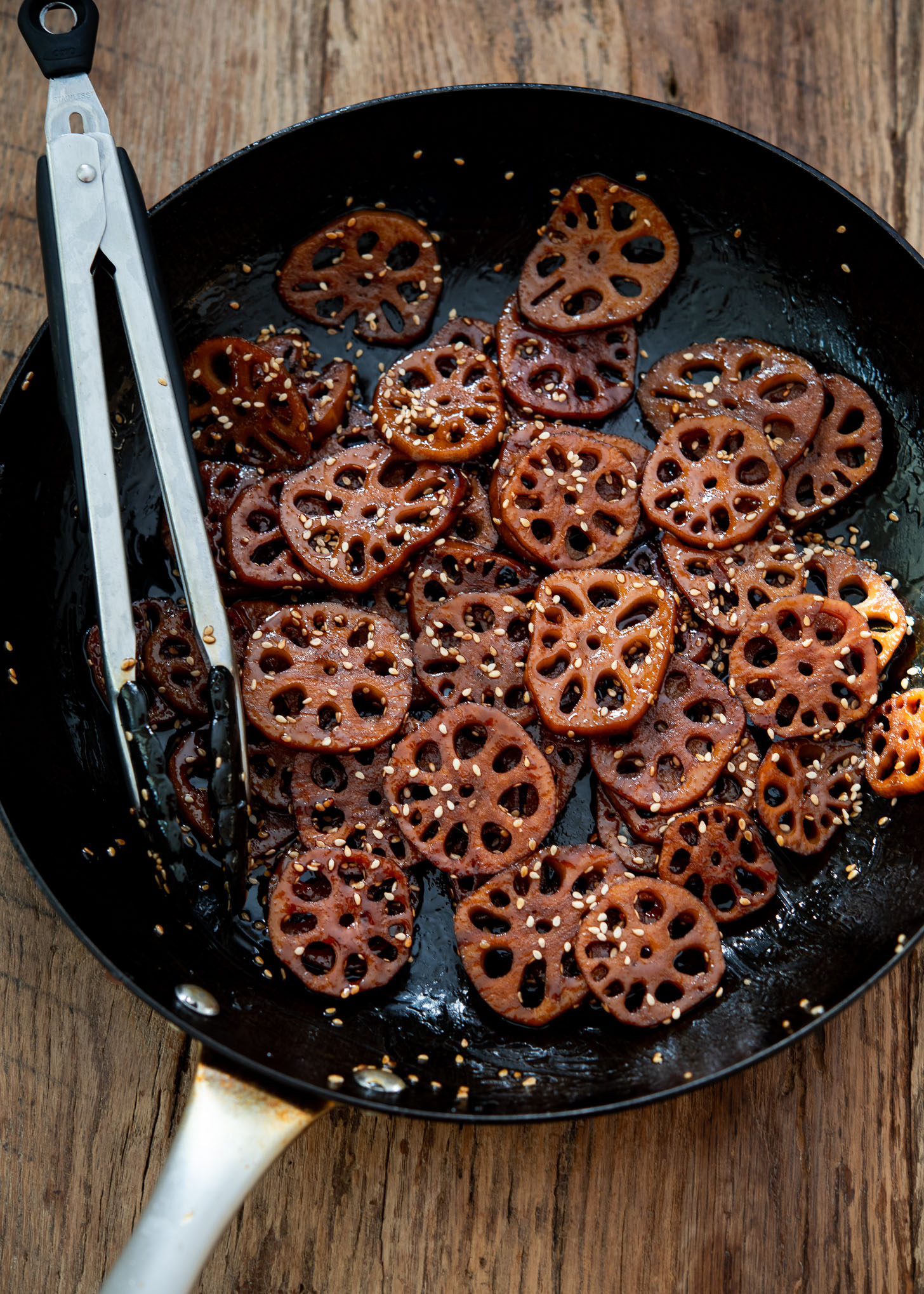
When I ran home and asked my mom why she never made it, she just shook her head. “Too much work for one side dish,” she said — which, with five kids to feed, was completely fair.
Now that I cook for a much smaller audience, I happily make it anytime. And truly, once you get the rhythm down, it’s easier than it looks. There are many ways to prepare lotus root across Asia, but this Korean-style braise is known for its glossy glaze and tender-chewy texture.
Lotus root stays pleasantly crisp even after simmering, which is why braising works so well. The slices absorb flavor but never fall apart.

How I Get the Signature Korean Texture and Glaze
Everyone makes lotus root recipe slightly differently in Korea, but the flavor should always land in that sweet-savory spot with a gentle chew; what Koreans call ggoduk-ggoduk. Here’s what I do to get that texture every time:
- A quick blanch: Blanching takes away the natural astringency and sets the texture so the slices stay tender-chewy instead of turning soft.
- Kelp water for depth: A little dashima (dried kelp) water gives the braising liquid a subtle, savory backbone that plain water just can’t match. It’s a small step, but it makes the sauce taste rounder and more “Korean.”
- Rice syrup for the perfect glaze: Corn syrup works in a pinch, but rice syrup gives the glaze a clean shine and holds onto the lotus root better. Adding it in stages lets you control how sticky and glossy the final dish becomes.

Ingredients & Korean Pantry Notes
Lotus root (yeongeun): Choose roots that feel heavy and firm with smooth skin. Small soft spots or bruises usually mean they’ve been sitting too long and can turn mushy when braised.
Kelp water (dashima mul): Instead of plain water, I use a quick kelp soak (just a small piece in cold water for a few minutes). It gives the braising liquid a flavor depth that’s very typical of Korean home cooking.
Vinegar: A little vinegar in the blanching water helps tame the natural astringency in lotus root and keeps the slices looking clean and bright.
Korean rice syrup (jocheong): I prefer rice syrup for this dish because it gives the glaze a clean, subtle sweetness typical in Korean jorim. It also holds up better in the fridge compared to corn syrup.
Soy sauce, dark brown sugar, mirim, sesame oil & seeds: Classic Korean seasoning trio for sweet-salty braises. The soy sauce brings saltiness, mirim softens the edges, and sesame oil and seeds go in at the end so the nutty aroma stays fresh.
How to Make Braised Lotus Root (Yeongeun Jorim)

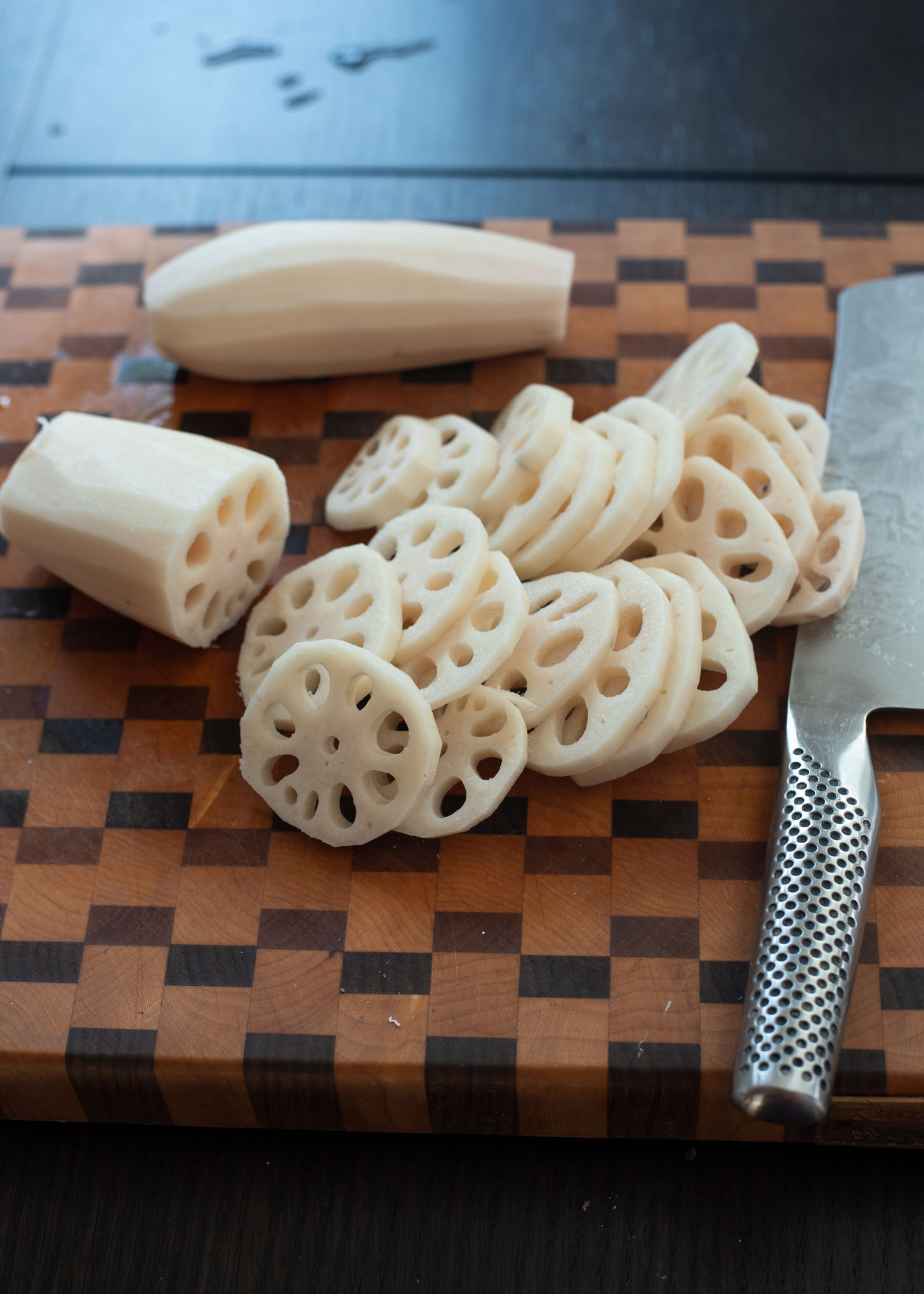
Prep and Slice. Peel the lotus root and slice it into uniform rounds, about ¼ inch thick. Keeping the slices the same thickness keeps the slices cooking evenly so the texture turns out just right.
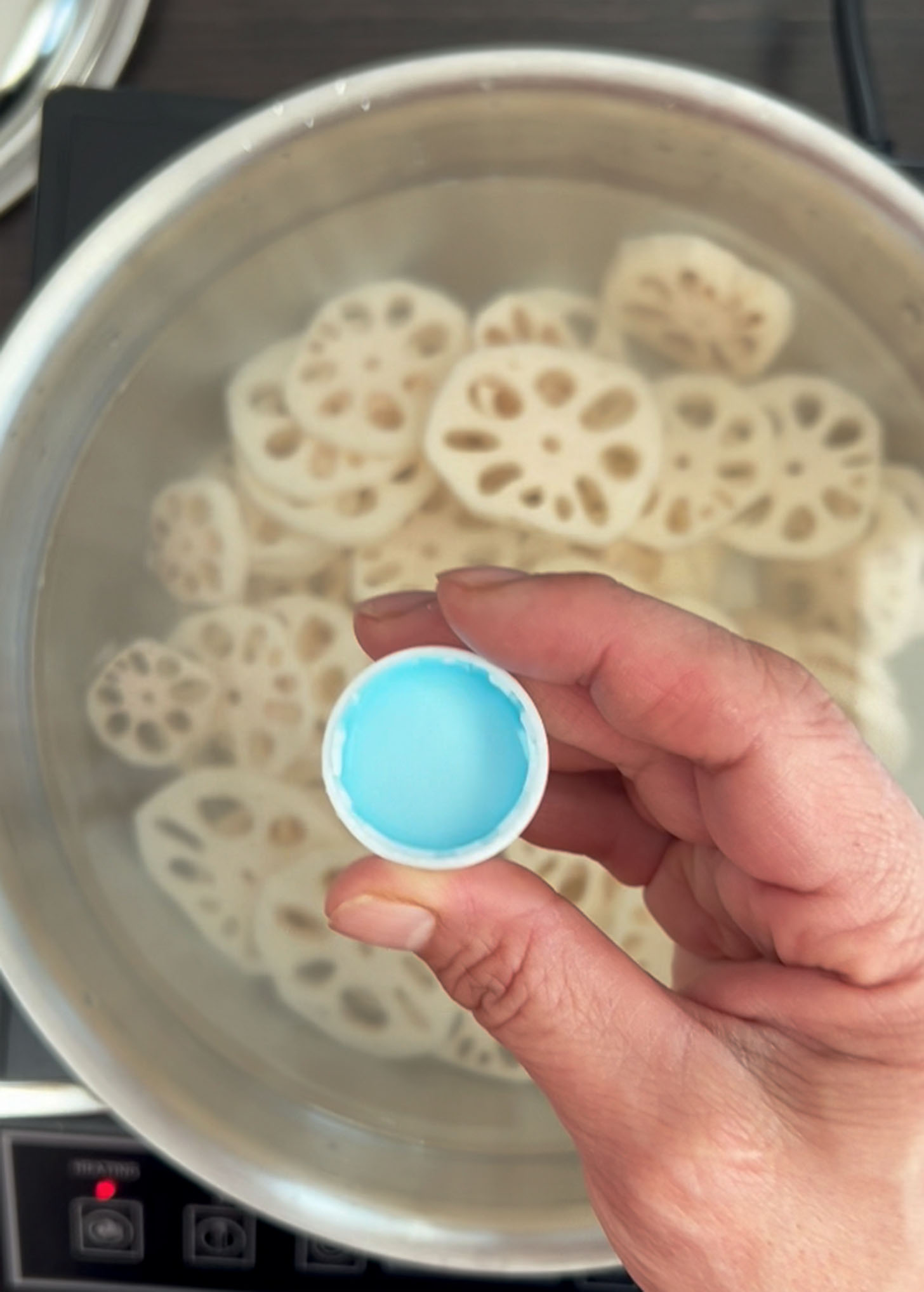

Blanch to Set the Bite. Blanch the slices in water with a splash of vinegar. This quick step removes the natural astringency and “sets” the surface so the lotus root holds its shape during braising. Rinse with cold water to stop the cooking.
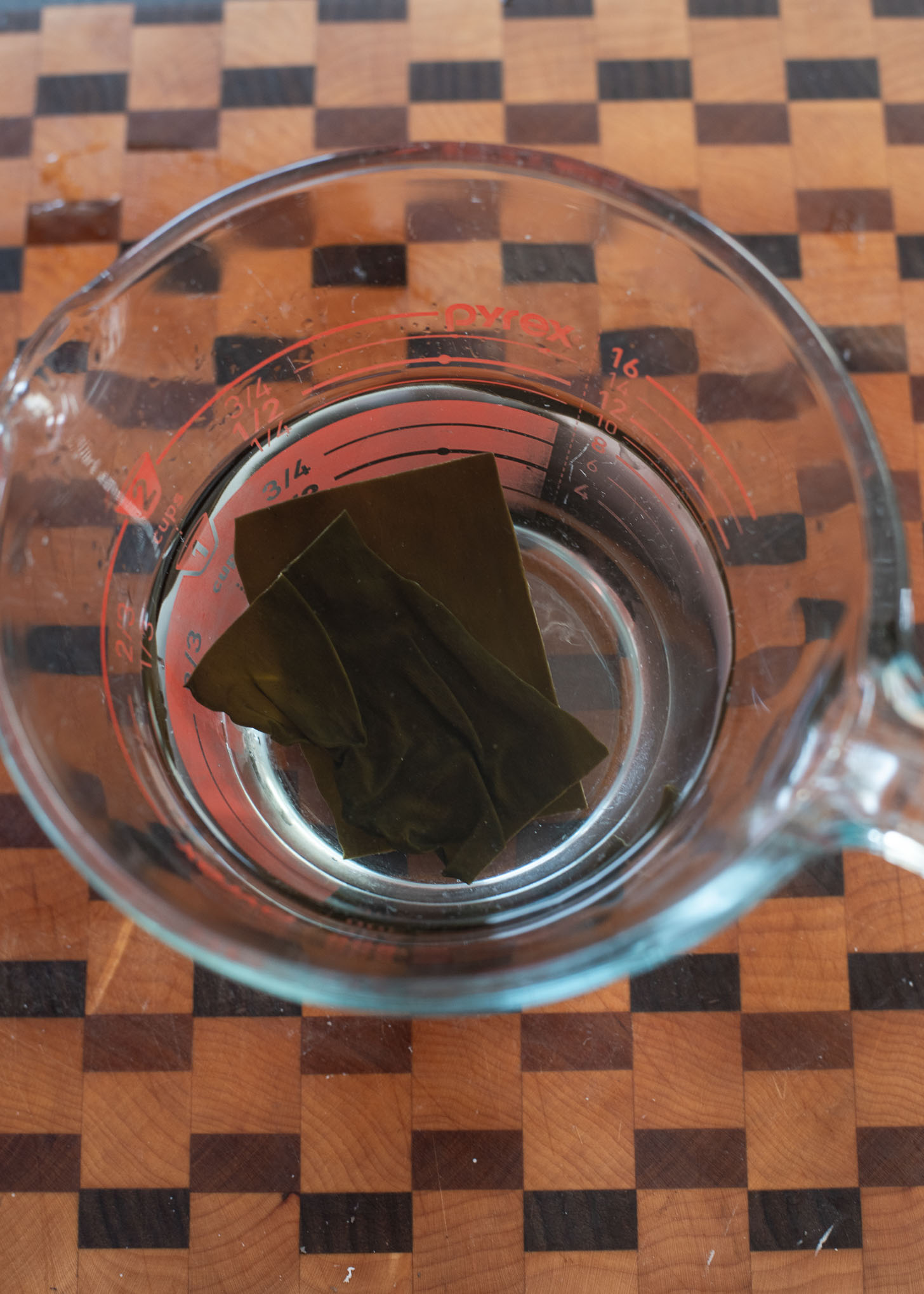
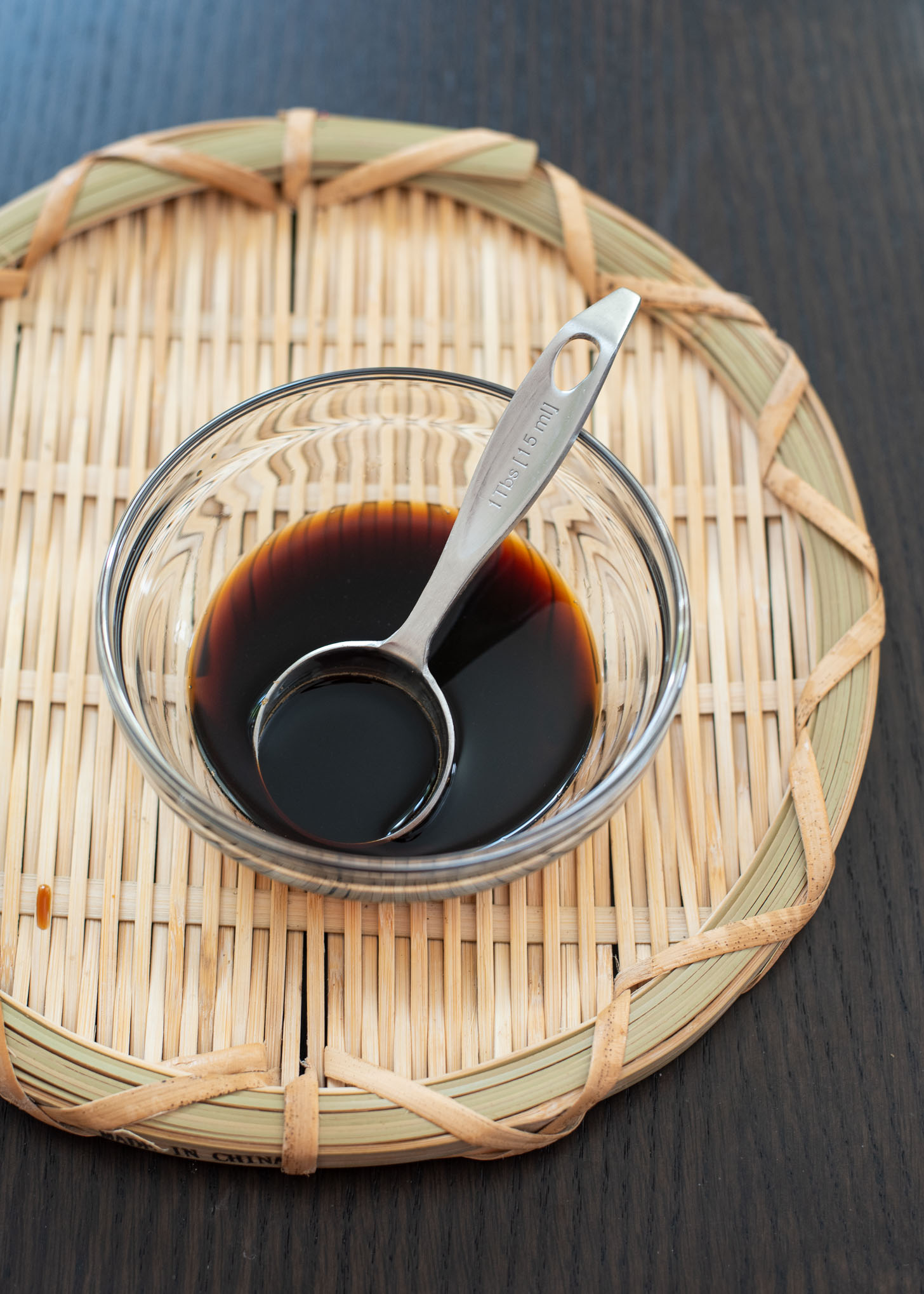
Build the Base Flavor. While the lotus root cools, make a simple seasoning base: soy sauce, dark brown sugar, and mirim. I also soak a small piece of dried kelp in cold water for a few minutes to make a quick dashima broth like you’ve seen in my gamja jorim (braised potatoes) recipe.


Slow Braise for Absorption. Warm a little oil in a skillet and coat the lotus root slices lightly before adding the seasoning mixture and kelp water. Let everything simmer slowly until the liquid reduces and the slices start to take on color. This is where the flavor sinks into every hole and crevice.

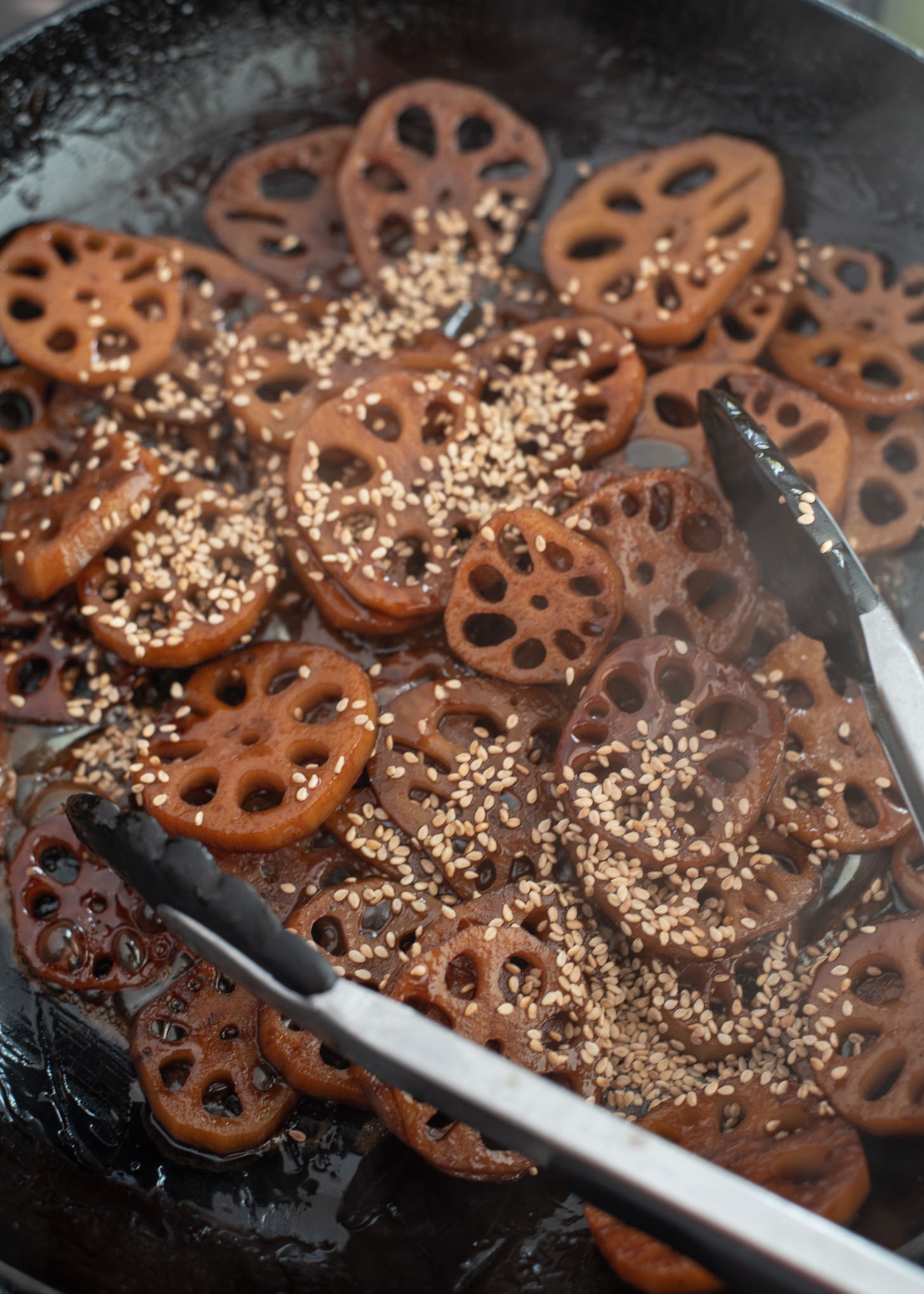
Finish with a Tight Glaze. When most of the liquid has cooked down, add the rice syrup and gently turn the slices until they’re glossy and evenly coated. Finish with a drizzle of sesame oil and a sprinkle of toasted sesame seeds.
It pairs easily with rice and simple banchan like kimchi, soy sauce anchovy stir-fry, or sigeumchi namul. If you enjoy these slow-braised dishes, you’ll find more ideas in my classic Korean side dishes collection.
Tips From My Kitchen
- Don’t rush the glaze. Once the liquid reduces, it can burn quickly. Keep the heat low and scrape the bottom gently.
- Add rice syrup gradually. You’ll get a tighter, cleaner glaze that doesn’t weep moisture the next day.
- Let it rest. The flavor deepens beautifully overnight, which is why this is such a good make-ahead banchan.
Storing
Keep leftovers in an airtight container in the refrigerator for up to a week. It tastes best cold — and honestly, even better on day two.
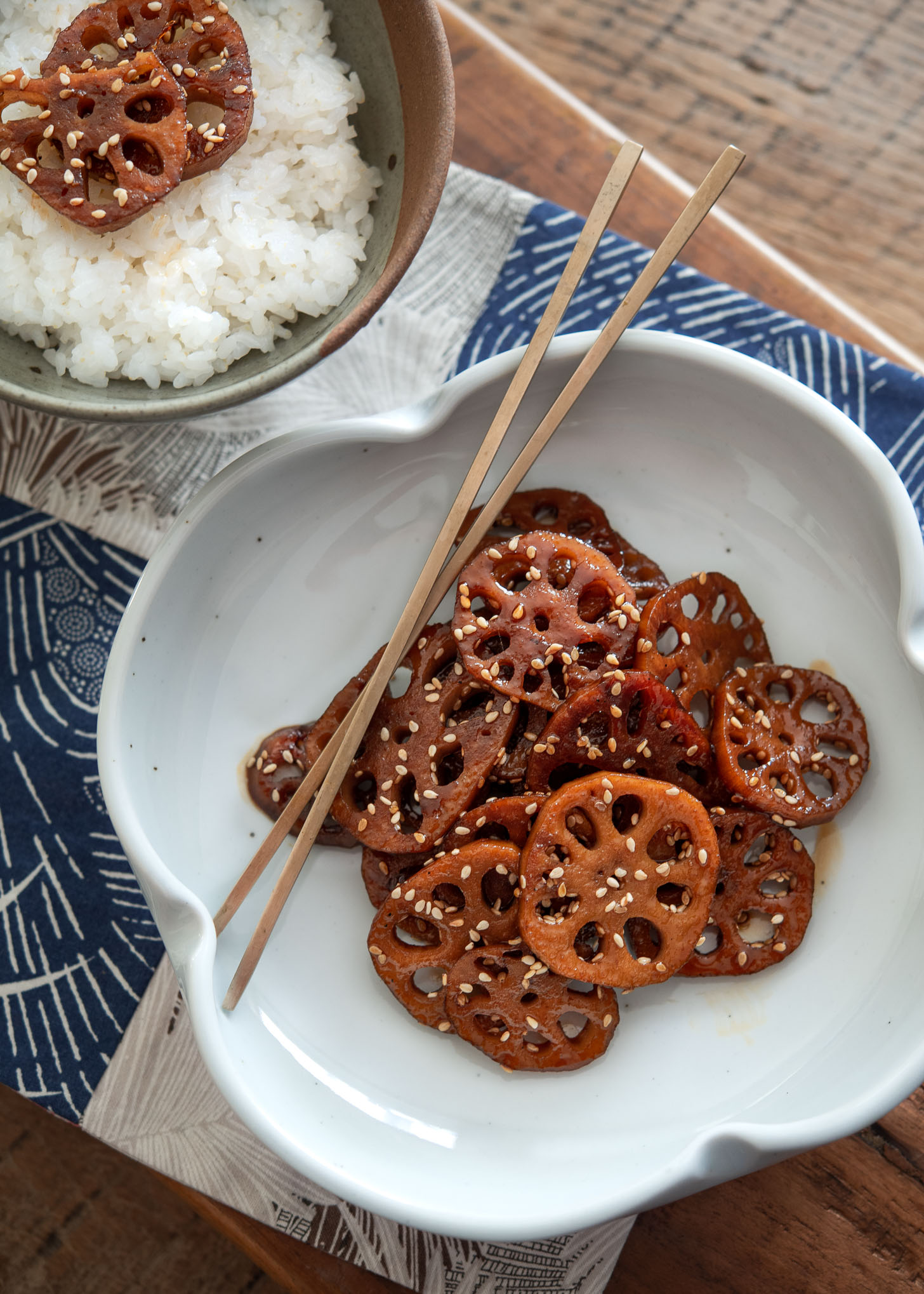

Korean Braised Lotus Root (Yeongeun Jorim)
Recipe Video
Ingredients
- 1 lb (450 g) lotus root
- 1 cup (240 ml) cold water
- 1 tbsp (15 ml) white vinegar
- 1 piece dried sea kelp (dashima), use 2 pieces if small
- 3 tbsp (45 ml) soy sauce
- 1 tbsp (15 ml) dark brown sugar
- 2 tbsp (30 ml) sweet rice wine (mirim)
- 3 tbsp (45 ml) Korean rice syrup (jocheong), or corn syrup
- 1 tbsp (15 ml) oil
- 1 tbsp (15 ml) sesame oil
- 1 tbsp (8–9 g)) toasted sesame seeds
Instructions
- Peel lotus root skin with a potato peeler and cut the tough ends off. Thinly slice the lotus root, about 1/4-inch thick.
- Add the lotus root slices to a pot, and add enough water to cover them. Add a tablespoon of vinegar. Bring it to a boil and cook, uncovered, for about 20 minutes (cooking time can be adjustable depending on the texture you desire). Drain, and rinse with cold water.
- Meanwhile combine the dried sea kelp in a bowl of cold water and set aside. In a small bowl, mix soy sauce, brown sugar, and rice wine; set aside.
- Heat 1 tablespoon of oil in a skillet over medium-low heat. Add the lotus roots and cook for 2-3 minutes coating each slice with oil evenly. Add the sauce mixture and sea kelp water (discarding the sea kelp) to the skillet, and bring it to boil over med-high heat. Let it cook until the liquid is almost evaporated, about 10-15 minutes.
- Reduce the heat to medium. Add 1 1/2 tablespoon of rice syrup and cook again to thicken the glaze, stirring gently, until the moisture in the glaze is almost gone. Add the remaining rice syrup and continue to cook until the glaze becomes very sticky and the bottom of skillet is almost dry. Make sure to stir from the bottom so that you don’t burn the glaze. Adjust the heat if necessary. Add sesame oil and sesame seeds, and toss well to coat. Serve with rice at room temperature or chilled.


I used frozen lotus root. Most of the fresh I can get looks quite moldy or something. Very good recipe. Will make again. Easy to follow. I didn’t use as much corn syrup for health reasons. Still very good. Love the texture of lotus root.
Thanks for sharing the idea of using frozen lotus root. Glad that you enjoyed it.
Can you use dried lotus root for this recipe?
If so how long do you blanch after rehydrating?
I suggest boiling for 20 min as same as recipe suggested. Thanks.
I have purchased some frozen lotus roots. I live in country Australia so have limited access to ingredients. Should I blanch them? Also would honey substitute for corn syrup.
Thanks…love your recipes 😋
Carolyn Boyden
Yes, give the frozen lotus a quick blanch. You can also substitute honey for the corn syrup, but use a slightly smaller amount.
Thanks Holly
Is it possible to use dried lotus root for this recipe?
I have not tried with dried lotus root in this particular dish, so I can’t assure the result. I recommend trying with fresh ones, since the crispy texture of fresh lotus root is crucial in this recipe.